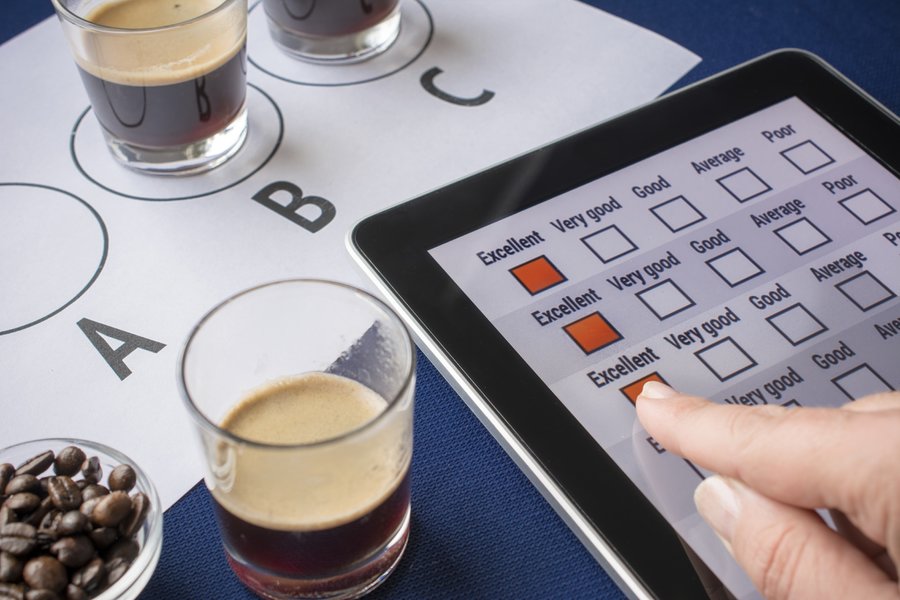ISO 53611 Descriptive Sensory Evaluation in Frozen Foods
The ISO 53611 standard provides a robust framework for descriptive sensory evaluation of frozen foods. This method is used to systematically evaluate and describe the attributes of frozen food products such as ice cream, frozen vegetables, fruits, fish sticks, and other similar items. The primary goal is to assess the sensory properties that contribute to the overall quality and consumer acceptance.
The process involves a trained panel of evaluators who are proficient in identifying, describing, and ranking the attributes of the food samples being tested. These attributes can include color, texture, flavor, aroma, mouthfeel, and appearance. The standard specifies detailed procedures for sample preparation, evaluation environment control, and data collection.
The ISO 53611 method is particularly useful in quality assurance programs where consistent product quality is critical. It helps manufacturers identify areas for improvement in their production processes by providing precise descriptions of sensory attributes that may differ between batches or over time. This ensures that the final products meet both internal and external expectations.
The evaluation process typically involves several steps, including sample preparation, panel training, test environment setup, and data analysis. Sample preparation is crucial as it affects the results of the sensory evaluation. Samples should be stored under controlled conditions to maintain their integrity before testing.
Panel training ensures that all evaluators are consistent in their assessments. This includes understanding the specific attributes being evaluated and practicing standardized techniques for describing these attributes. The test environment must also be carefully controlled, with temperature, lighting, and noise levels kept at optimal levels to minimize external factors affecting the evaluation.
Data analysis is performed using statistical methods that summarize and interpret the sensory evaluations conducted by the panel. This data can then be used to make informed decisions about product quality and process improvements.
The ISO 53611 method is widely recognized in the food industry for its reliability and accuracy. It allows companies to maintain high standards of product quality, ensuring that each batch meets stringent criteria set by regulatory bodies and internal specifications.
By using this standardized approach, businesses can enhance their reputation among consumers and distributors alike. The detailed descriptions provided by trained evaluators help in making informed decisions regarding production adjustments, ingredient selection, and packaging design. This ultimately leads to products that are more appealing to the target market.
Scope and Methodology
The scope of ISO 53611 includes the detailed procedures for descriptive sensory evaluation applicable to frozen food products. It covers everything from sample preparation to data analysis, ensuring that all steps are carried out systematically and consistently.
The methodology involves setting up a controlled environment suitable for sensory evaluations, selecting trained evaluators who possess relevant expertise, preparing samples according to specified guidelines, conducting the actual evaluation using standardized techniques, recording the results accurately, and analyzing them statistically. Each step is crucial in obtaining reliable and reproducible data.
Sample preparation is critical as it influences how the food appears and tastes during evaluation. Samples should be representative of the product being tested and prepared under consistent conditions to ensure uniformity across all evaluations.
The controlled environment ensures that external factors do not interfere with the sensory assessment process. Factors such as temperature, humidity, lighting, and noise levels need to be carefully managed to provide an optimal setting for accurate evaluation.
Trained evaluators play a vital role in this method by bringing their expertise to bear on identifying and describing sensory attributes accurately. Their training helps them recognize subtle differences between samples, which is essential for maintaining high standards of product quality.
Industry Applications
| Industry Segment | Application Details |
|---|---|
| Frozen Foods Manufacturing | This method is used to evaluate the consistency and quality of frozen food products. It helps manufacturers ensure that each batch meets specific standards set by internal specifications and regulatory requirements. |
| Food Retailers | Retailers use this technique to assess new product launches or changes in existing product lines. It assists them in making informed decisions about stock levels, promotional activities, and customer satisfaction. |
| Distribution Companies | Distributors rely on sensory evaluation results to ensure that products meet quality standards before distribution. This helps prevent spoilage and maintains brand integrity throughout the supply chain. |
| Consumer Research Agencies | Research agencies use this method to gather insights into consumer preferences, trends, and satisfaction levels with different frozen food products. This information is valuable for developing marketing strategies and product innovations. |
International Acceptance and Recognition
The ISO 53611 standard has gained widespread acceptance across various countries due to its comprehensive approach and rigorous methodology. It is recognized by regulatory bodies such as the FDA (United States), EFSA (European Union), and other international standards organizations.
Companies that adopt this method benefit from enhanced global market access, as it aligns with internationally accepted practices. This standardization fosters trust among consumers worldwide who expect consistent quality across different regions.
The use of ISO 53611 also facilitates better communication between stakeholders involved in the frozen food industry, including manufacturers, retailers, distributors, and researchers. It provides a common language for discussing product attributes and evaluation techniques.
By adhering to this standard, organizations demonstrate their commitment to maintaining high standards of quality assurance. This not only enhances their competitive edge but also contributes positively towards sustainable development practices within the industry.





